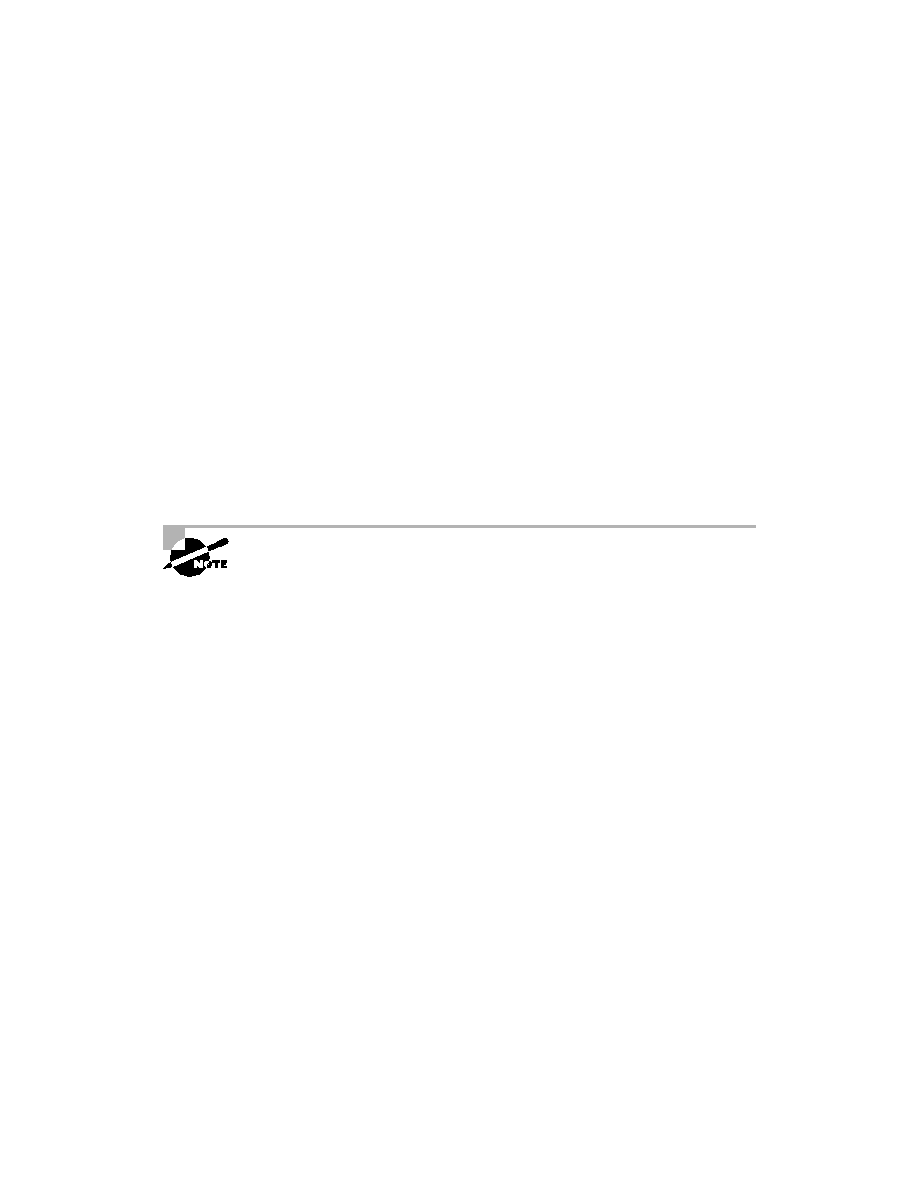
148
Chapter 3
Internet Protocols
skipping bits. This means that the only Class C subnet masks can be:
Binary Decimal Shorthand
---------------------------------------------------------
10000000 = 128 /25 (Not valid on the Cisco exams!)
11000000 = 192 /26
11100000 = 224 /27
11110000 = 240 /28
11111000 = 248 /29
11111100 = 252 /30
11111110 = 254 /31 (Not valid)
Now, the RFCs say that you can't have only one bit for subnetting, since
that would mean that the subnet bit would always be either off or on, which is
illegal. So, the first subnet mask you can legally use is 192, and the last one
is 252 because you need at least two bits for defining hosts.
In production, you can use one bit for assigning subnets. This is called subnet-
zero. But know that Cisco doesn't consider subnet-zero valid on any of their
certification exams!
Okay, what the heck does the /25, /26, etc., mean? This just means how
many bits are used in the subnet mask. Since all of these masks are Class C
addresses, the mask at a minimum must be 255.255.255.0, which is 24 bits
(8 bits in each octet), or /24. The "slash" address convention is just an easy
way to identify the mask without having to write out the whole mask; you
can write the combination of address 192.168.10.0 and subnet mask
255.255.255.0 as 192.168.10.0/24. (No, you cannot configure a Cisco
router using this format).
Another example is 255.255.255.192, or /26. Remember that each octet
has a maximum of 8 bits. The first three octets have all bits in use, so that is 24
bits (8
Ч 3 = 24), plus two bits in the fourth octet for a total of 26 bits, or /26.
The Binary Method: Subnetting a Class C Address
In this section, I'm going to teach you how to subnet a Class C address using
the binary method. I'll start by using the first subnet mask available with a
Class C address, which borrows two bits from subnetting. For this example,
I'll be using 255.255.255.192.
192 = 11000000
Copyright ©2002 SYBEX, Inc., Alameda, CA
www.sybex.com
